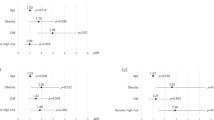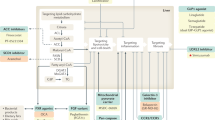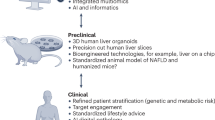Abstract
Inflammation and metabolic dysfunction are hallmarks of the progression of non-alcoholic fatty liver disease (NAFLD), which is the fastest-growing liver disease worldwide. Emerging evidence indicates that innate immune mechanisms are essential drivers of fibrosis development in chronic inflammatory liver diseases, including NAFLD. In this study, 142 NAFLD patients were genotyped for three IFNL4 single-nucleotide variants in order to investigate the genetic relationship between IFNL4 and fibrosis in NAFLD patients. We observed an overrepresentation of the non-functional IFNL4 allele in patients with significant fibrosis (>F2). Next, we investigated the potential protective role of interferon (IFN) in relation to the development of liver fibrosis in an animal model of non-alcoholic steatohepatitis (NASH). In contradiction to our hypothesis, the results showed an increase in fibrosis in IFN treated animals. Our study clearly indicates that IFN is able to affect the development of liver fibrosis, although our clinical and experimental data are conflicting.
This is a preview of subscription content, access via your institution
Access options
Subscribe to this journal
Receive 6 digital issues and online access to articles
$119.00 per year
only $19.83 per issue
Buy this article
- Purchase on Springer Link
- Instant access to full article PDF
Prices may be subject to local taxes which are calculated during checkout




Similar content being viewed by others
Data availability
The data that support the findings of this study are available on request from the corresponding author, MM, upon reasonable request. The data are not publicly available due to the privacy of the human participants.
References
Wong RJ, Aguilar M, Cheung R, Perumpail RB, Harrison SA, Younossi ZM, et al. Nonalcoholic steatohepatitis is the second leading etiology of liver disease among adults awaiting liver transplantation in the United States. Gastroenterology. 2015;148:547–55.
Younossi Z, Anstee QM, Marietti M, Hardy T, Henry L, Eslam M, et al. Global burden of NAFLD and NASH: trends, predictions, risk factors and prevention. Nat Rev Gastroenterol Hepatol. 2018;15:11–20.
EASL. EASL–EASD–EASO Clinical Practice Guidelines for the management of non-alcoholic fatty liver disease. J Hepatol. 2016;64:1388–402.
Tilg H, Moschen AR.Evolution of inflammation in nonalcoholic fatty liver disease: the multiple parallel hits hypothesis.Hepatology. 2010;52:1836–46.
Friedman SL, Neuschwander-Tetri BA, Rinella M, Sanyal AJ. Mechanisms of NAFLD development and therapeutic strategies. Nat Med. 2018;24:908–22.
Suppiah V, Moldovan M, Ahlenstiel G, Berg T, Weltman M, Abate ML, et al. IL28B is associated with response to chronic hepatitis C interferon-alpha and ribavirin therapy. Nat Genet. 2009;41:1100–4.
Tanaka Y, Nishida N, Sugiyama M, Kurosaki M, Matsuura K, Sakamoto N, et al. Genome-wide association of IL28B with response to pegylated interferon-alpha and ribavirin therapy for chronic hepatitis C. Nat Genet. 2009;41:1105–9.
Eslam M, Hashem AM, Leung R, Romero-Gomez M, Berg T, Dore GJ, et al. Interferon-lambda rs12979860 genotype and liver fibrosis in viral and non-viral chronic liver disease. Nat Commun. 2015;6:6422.
Petta S, Grimaudo S, Camma C, Cabibi D, Di Marco V, Licata G, et al. IL28B and PNPLA3 polymorphisms affect histological liver damage in patients with non-alcoholic fatty liver disease. J Hepatol. 2012;56:1356–62.
Petta S, Valenti L, Tuttolomondo A, Dongiovanni P, Pipitone RM, Camma C, et al.Interferon lambda 4 rs368234815 TT>deltaG variant is associated with liver damage in patients with nonalcoholic fatty liver disease.Hepatology. 2017;66:1885–93.
Uygun A, Ozturk K, Demirci H, Oztuna A, Eren F, Kozan S, et al. The association of nonalcoholic fatty liver disease with genetic polymorphisms: a multicenter study. Eur J Gastroenterol Hepatol. 2017;29:441–7.
Prokunina-Olsson L, Muchmore B, Tang W, Pfeiffer RM, Park H, Dickensheets H, et al. A variant upstream of IFNL3 (IL28B) creating a new interferon gene IFNL4 is associated with impaired clearance of hepatitis C virus. Nat Genet. 2013;45:164–71.
Smith KR, Suppiah V, O’Connor K, Berg T, Weltman M, Abate ML, et al. Identification of improved IL28B SNPs and haplotypes for prediction of drug response in treatment of hepatitis C using massively parallel sequencing in a cross-sectional European cohort. Genome Med. 2011;3:57.
Bochud PY, Bibert S, Kutalik Z, Patin E, Guergnon J, Nalpas B, et al.IL28B alleles associated with poor hepatitis C virus (HCV) clearance protect against inflammation and fibrosis in patients infected with non-1 HCV genotypes. Hepatology. 2012;55:384–94.
Terczynska-Dyla E, Bibert S, Duong FH, Krol I, Jorgensen S, Collinet E, et al. Reduced IFNlambda4 activity is associated with improved HCV clearance and reduced expression of interferon-stimulated genes. Nat Commun. 2014;5:5699.
Mohlenberg M, Terczynska-Dyla E, Thomsen KL, George J, Eslam M, Gronbaek H, et al. The role of IFN in the development of NAFLD and NASH. Cytokine. 2019;124:154519.
Sommereyns C, Paul S, Staeheli P, Michiels T. IFN-lambda (IFN-lambda) is expressed in a tissue-dependent fashion and primarily acts on epithelial cells in vivo. PLoS Pathog. 2008;4:e1000017.
Ghazarian M, Revelo XS, Nøhr MK, Luck H, Zeng K, Lei H, et al. Type I interferon responses drive intrahepatic T cells to promote metabolic syndrome. Sci Immunol. 2017;2:eaai7616.
Roh YS, Park S, Kim JW, Lim CW, Seki E, Kim B.Toll-like receptor 7-mediated type I interferon signaling prevents cholestasis- and hepatotoxin-induced liver fibrosis. Hepatology. 2014;60:237–49.
Wieser V, Adolph TE, Grander C, Grabherr F, Enrich B, Moser P, et al. Adipose type I interferon signalling protects against metabolic dysfunction. Gut. 2018;67:157–65.
Chang XM, Chang Y, Jia A. Effects of interferon-alpha on expression of hepatic stellate cell and transforming growth factor-beta1 and alpha-smooth muscle actin in rats with hepatic fibrosis. World J Gastroenterol. 2005;11:2634–6.
Fort J, Pilette C, Veal N, Oberti F, Gallois Y, Douay O, et al. Effects of long-term administration of interferon alpha in two models of liver fibrosis in rats. J Hepatol. 1998;29:263–70.
Moreno MG, Muriel P. Remission of liver fibrosis by interferon-alpha 2b. Biochemical Pharmacol. 1995;50:515–20.
Souza MM, Parana R, Trepo C, Barbosa AA Jr, Oliveira I, Andrade ZA. Effect of interferon-alpha on experimental septal fibrosis of the liver - study with a new model. Mem Inst Oswaldo Cruz. 2001;96:343–8.
Tasci I, Mas MR, Vural SA, Deveci S, Comert B, Alcigir G, et al. Pegylated interferon-alpha plus taurine in treatment of rat liver fibrosis. World J Gastroenterol. 2007;13:3237–44.
Lykke Eriksen P, Sørensen M, Grønbæk H, Hamilton-Dutoit S, Vilstrup H, Thomsen KL. Non-alcoholic fatty liver disease causes dissociated changes in metabolic liver functions. Clin Res Hepatol Gastroenterol. 2019;43:551–60.
Eriksen PL, Thomsen KL, Larsen LP, Grønbaek H, Vilstrup H, Sørensen M. Non-alcoholic steatohepatitis, but not simple steatosis, disturbs the functional homogeneity of the liver - a human galactose positron emission tomography study. Alimentary Pharmacol Ther. 2019;50:84–92.
Thomsen KL, Grønbæk H, Glavind E, Hebbard L, Jessen N, Clouston A, et al. Experimental nonalcoholic steatohepatitis compromises ureagenesis, an essential hepatic metabolic function. Am J Physiol Gastrointest Liver Physiol. 2014;307:G295–301.
Kleiner DE, Brunt EM, Van Natta M, Behling C, Contos MJ, Cummings OW, et al.Design and validation of a histological scoring system for nonalcoholic fatty liver disease.Hepatology. 2005;41:1313–21.
Sudmant PH, Rausch T, Gardner EJ, Handsaker RE, Abyzov A, Huddleston J, et al. An integrated map of structural variation in 2,504 human genomes. Nature. 2015;526:75–81.
Sarasin-Filipowicz M, Wang X, Yan M, Duong FH, Poli V, Hilton DJ, et al. Alpha interferon induces long-lasting refractoriness of JAK-STAT signaling in the mouse liver through induction of USP18/UBP43. Mol Cell Biol. 2009;29:4841–51.
Eslam M, McLeod D, Kelaeng KS, Mangia A, Berg T, Thabet K, et al. IFN-lambda3, not IFN-lambda4, likely mediates IFNL3-IFNL4 haplotype-dependent hepatic inflammation and fibrosis. Nat Genet. 2017;49:795–800.
Carreres L, Jílková ZM, Vial G, Marche PN, Decaens T, Lerat H. Modeling diet-induced NAFLD and NASH in rats: a comprehensive review. Biomedicines. 2021;9:378.
Cai J, Zhang XJ, Li H. The role of innate immune cells in nonalcoholic steatohepatitis. Hepatology. 2019;70:1026–37.
Luci C, Bourinet M, Leclère PS, Anty R, Gual P. Chronic inflammation in non-alcoholic steatohepatitis: molecular mechanisms and therapeutic strategies. Front Endocrinol. 2020;11:597648.
Targher G, Tilg H, Byrne CD. Non-alcoholic fatty liver disease: a multisystem disease requiring a multidisciplinary and holistic approach. Lancet Gastroenterol Hepatol. 2021;6:578–88.
Jouvin-Marche E, Macek Jílková Z, Thelu MA, Marche H, Fugier E, Van Campenhout N, et al. Lymphocytes degranulation in liver in hepatitis C virus carriers is associated with IFNL4 polymorphisms and ALT levels. J Infect Dis. 2014;209:1907–15.
O’Connor KS, Read SA, Wang M, Schibeci S, Eslam M, Ong A, et al. IFNL3/4 genotype is associated with altered immune cell populations in peripheral blood in chronic hepatitis C infection. Genes Immun. 2016;17:328–34.
Funding
This study was supported by Danmarks Frie Forskningsfond (7016-00331B), Novo Nordisk Fonden (NNF19OC0055039), and Fabrikant Vilhelm Pedersen og hustrus mindelegat. The funding sources had no role in the study design, collection, analysis, and interpretation of data, writing of the paper or the decision to submit the paper for publication.
Author information
Authors and Affiliations
Contributions
MM, KLT, HG, and RH contributed to study design, data collection, data analysis, data interpretation. PLE and TLL contributed with patient inclusion. SJHD and MBN performed histopathological analyses. MM wrote the paper draft. MM performed the literature search, created figures and tables. The final version of this paper was reviewed and approved by all authors.
Corresponding author
Ethics declarations
Competing interests
The authors declare no competing interests.
Additional information
Publisher’s note Springer Nature remains neutral with regard to jurisdictional claims in published maps and institutional affiliations.
Supplementary information
Rights and permissions
About this article
Cite this article
Møhlenberg, M., Eriksen, P.L., Laursen, T.L. et al. The presence of interferon affects the progression of non-alcoholic fatty liver disease. Genes Immun 23, 157–165 (2022). https://doi.org/10.1038/s41435-022-00176-6
Received:
Revised:
Accepted:
Published:
Issue Date:
DOI: https://doi.org/10.1038/s41435-022-00176-6
This article is cited by
-
The dynamic interface of genetics and immunity: toward future horizons in health & disease
Genes & Immunity (2023)



